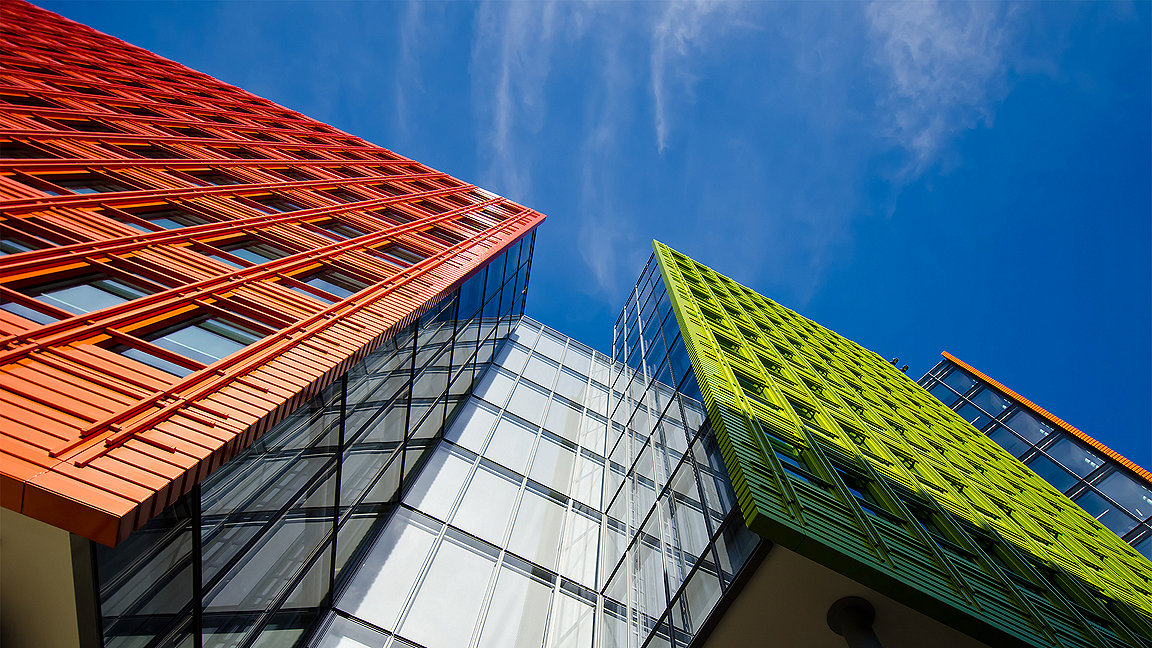
Asia Pacific (APAC) and the Middle East and Africa (MEA) are generally outperforming Europe and the Americas in the commercial real estate sector, according to the latest RICS Global Commercial Property Monitor
Despite differing fortunes on a regional level, the global perception of which stage of the commercial property cycle the industry is experiencing (bottom, downturn, upturn or peak) has improved. Only 53% of respondents now believe they’re in the middle of a downturn, compared to 62% in Q4 2022. And 24% say they are now experiencing an upturn, which is an increase of 7 points on Q4 2022’s 17%.
Central bank policy has played a significant role in this edition of the Global Commercial Property Monitor. Increased interest rates in many countries have influenced the Commercial Property Sentiment Index (CPSI), which captures industry sentiment towards commercial real estate. This is most visible in the Americas, where sentiment has decreased from -9 to -14.
Tarrant Parsons, senior economist at RICS, says: “While the Americas’ CPSI worsened, led by a further deterioration in the US in particular, the aggregated results for APAC saw a significant improvement, climbing from -21 to -4. This turnaround was primarily driven by the shift in sentiment across China, where the CPSI climbed from -44 to -7 (the best result since Q2 2021) amid signs of a stronger than anticipated economic rebound following the ending of the zero COVID-19 policy.”
One survey respondent based in Dallas, US, adds: “Continuing uncertainty over inflation and interest rates is impacting both leasing and investing. Offices are particularly affected due to concerns over future demand for space given increasing vacancies. The industrial sector is still the bright spot with prime rents still seeing some increases on the back of continuing demand and relative lack of inventory.”
WFH Fridays
One particular trend that many countries have in common is half-empty offices on a Friday. In a hybrid working culture where staff are given a level of flexibility over which days they work in the office, relatively few are opting for the Friday commute.
Research by Savills into flexible working patterns across Europe shows that office occupancy peaks from Tuesday to Thursday, when offices are 62-63% full. Monday is 5-6% lower and Fridays have a mere 45% occupancy rate – an average of 17% lower than the midweek peak.
While vacant desks on a Friday is a common theme across Europe, there is disparity between cities in the average office occupancy rates over a five-day working week. The highest rate is in Paris (66%) and Madrid (65%), while cities with lowest average office occupancy are London (49%) and Warsaw (46%). It’s worth noting that separate research by Remit Consulting puts the average UK office occupancy closer to 30%, which is much lower than pre-pandemic levels of 60-80%.
Demand for office space
The Global Commercial Property Monitor paints a picture of a challenging landscape for both office and retail space. Occupier demand and investor enquiries are in negative balance for both types of property, although the opposite is true for industrial space.
“Difficulties faced by the office sector (as organisations grapple with the shift to hybrid working in some parts of the world) and the retail sector (in the face of the rise of online shopping) remain intense,” says Parsons. “The contrast to this continues to be evident in the appetite to acquire and occupy industrial/logistics space.”
A survey respondent based in Durban, South Africa, says: “The higher interest rate environment that we are presently in, coupled with tightened consumer spending, will see the retail sector coming under pressure in terms of profit margin. In turn, this will bring slower or negative rental reversions back into the spotlight. Office space will remain the underperformer while high-tech industrial warehousing/logistics will be the jewel in the crown for the next 12 to 18 months.”
Higher vacancy rates in the US
Office vacancy rates are higher across the US than other international markets, sometimes by as much as 20-25%, according to JLL’s Global Real Estate Perspective report for March 2023.
The report states: “In most markets, high-quality premium assets continue to significantly outperform the rest of the market as occupiers focus on upgrading space. The global vacancy rate jumped to 14.9% in Q4, with the largest rise recorded in the US.”
This chimes with the findings of RICS’ Global Commercial Property Monitor, that unfavourable credit conditions are creating economic headwinds. The vast majority of respondents in the Americas (70%) said that credit conditions are deteriorating – and it was a similar picture for European respondents. By contrast, fewer than 20% of APAC respondents believed credit conditions are deteriorating and just over 30% in the MEA region.
“Given the ongoing tightening in monetary policy by the world’s key central banks, it is not surprising that the credit conditions indicator continues to point to a deteriorating environment,” says Parsons. “Around 50% of respondents suggested the picture worsened over the period. In the case of the Americas, the share taking this view was 70%.
“Once again, an integral driver of this latter trend was the US, where around three-quarters of contributors suggested that the credit environment had become more difficult during the early part of the year. This is likely, in part, to reflect not just the stance of the Federal Reserve but also the banking problems that emerged in March with the collapse of both Silicon Valley Bank and Signature Bank. Against this backdrop, lending standards are likely to have become more restrictive.”

